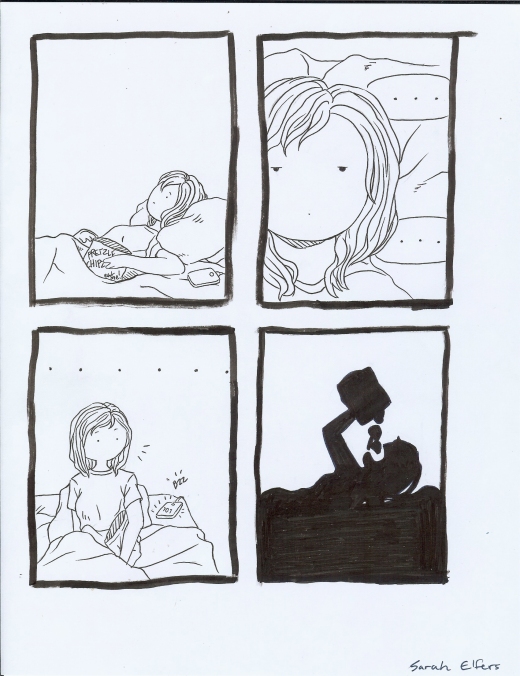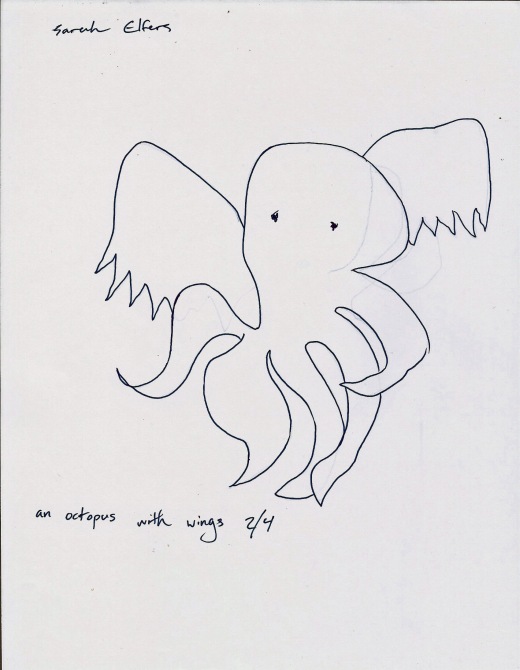
Tag Archives: 2016 Sarah
James O’Barr’s “The Crow” is an interesting and unique book. It follows the character Eric as The Crow as he gets revenge on the men who killed his fiancee and attempted to kill him as well. The first thing that stood out to me about the story was that it was choppy and the art at times seems inconsistent. I’m figuring that this is attributed to the span of time that the story was drawn in. This is an enjoyable element to the story. The story was created over a long period of time so it becomes apparent that after all those years the pain didn’t go away. This is important because I believe that is an essential theme of the story. The focus on the pain that the character The Crow feels is a strong component of the story. It is addressed in such depth and frequency to get the reader to understand the extent of his pain, and that it is something continuous and undying (like him). Even after he starts to get revenge the pain still does not appear to be alleviated. This struck accord with me personally so I feel as if the demographic O’Barr may be trying to reach is people who have felt immense and unbearable pain, because they will truly understand what the character is feeling. The story has the ability to come more alive that way.
Stylistically, the story is dark and poetic. There are many poems about pain, death and other related themes in between scenes in the story. They are related to what is happening in the story at the time, and I believe that they act as small interludes. This allows the reader to take in what had just happened while reading something on the calmer side (as opposed to all the action that happens in the scenes). While this interlude is in the same theme and is related to what happens in the story, it solidifies that theme in a beautiful and artistic way. This keeps the story from becoming all about the gore and violence of The Crow killing (since that happens a lot in the story). This keeps the story in tune with the emotional aspect since that is an important component and is the core of everything that is happening. As for the drawing style, as I mentioned before it is dark. At certain parts and important moments there is a lot of detail in the panels. I believe this device is used to get the reader to look at all the detail and spend more time in that panel, making the moment come off as more important and effective. Those panels were also better rendered usually. The inconsistencies in the art caused some of the less important panels to feel somehow “off” or almost in a different style. This caused an interesting dynamic to the story so I wouldn’t necessarily refer to it as a bad thing.
The story had a supernatural element to it that felt notable. It seems as if the character Eric should have died along with his fiancee (considering that he was shot in the head twice) however the story suggests that he was able to endure all of this and survive because of how strong his will for revenge was. This does not feel too extreme but rather is believable in the context of a comic book. The Crow as a character is super hero-esque, but is only avenging himself and has a blatant disregard for hurting others. His similarities to super heroes are that he has an origin story that made him this way, and he seems to by supernatural means overcome a threatening situation. This is another reason the supernatural element is not off-putting. We as reader take the story for what it is: A version of a story used to convey the emotions that were felt by the person who experienced it.
Sarah: Persepolis by Marjane Satrapi
“Persepolis”
The graphic novel Persepolis by Marjane Satrapi tells the story of the Iranian revolution in 1980 from the view of a young Marji. For this type of story line this comic uses atmosphere to aid how the story is told. Almost all of the subject matter addressed in this comic (the demonstrations, the class system, the imprisonment and torture of people, the revolution in general) are very serious matters. The style of the comic is simple and aids in putting the viewer into a childlike (since the story is told by a child) perspective of these events. The artist does not use color but rather lets the stark black and white and heavy shadows feel the heaviness of the story and the events being depicted.
The manner in which things are written, such as the dialogue and narration, is a manner of fact way as one would assume a child would tell things. This also contributes to the idea that the story is being told by a child. Even though a lot of the things addressed are very political so in turn are subjective ideas that many different people have different opinions on, the narrator seems very set and sure of the information she has. As a reader we want to trust our narrator however there are many instances in the story that show her childlike qualities (such as talking to “God”, playing and acting out war scenarios, blurting out inappropriate or sensitive information and subjects to other characters) and this in turn makes her more credible. The reader is then able to take her telling the story as her perception rather than definite truth, and as a reader we can form our own opinions of the events. That being said, the reader is still most likely to be on Marji’s side because many back stories are told for the reader to get to know her and fully understand where her intentions lie.
Another very powerful aspect of this story is its ability to portray the characters as humans deserving of justice and the luxury of a normal life. The sad truth is that a lot of people of Iranian decent or Iranian immigrants are discriminated against and at times not viewed as a human with the same rights as any other human. This story puts the reader into a perspective that allows you to see these people just trying to live fair and honest lives, and them fighting for their country and the inherent justice that they are deserving of. By these characters being simple drawings and not real people, the element of racism is almost eliminated and allows these characters to be considered without that aspect. That is a reason it was necessary for this story to be told in comic form, rather than film. The characters are able to be in this face value context when the story is being read, but after taking in the information the reader is able to consider what was told in the context of the real world we live in and I personally found the realization to be sinking and eye opening.
Sarah: With Eyes Closed
A series of drawings done in class with eyes closed and with the non-dominant hand.







Sarah

Sarah: Comics as Haiku




Sarah

